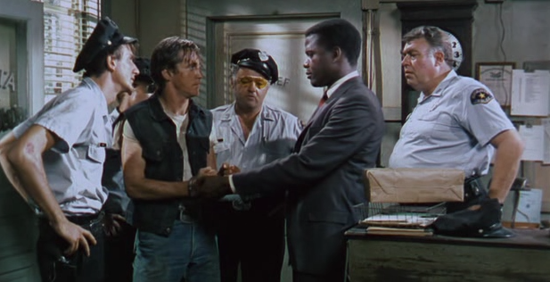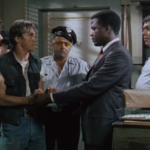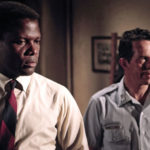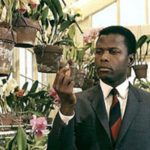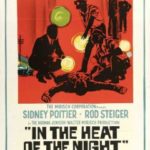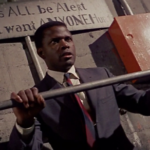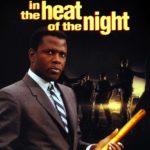Norman Jewison‘s 1967 film In The Heat Of The Night (timed was nominated for 5 Oscars and won one – Best Actor for Rod Steiger as the racist police chief Gillespie (an actor whose intensity you will recall I recently discussed in a review of The Pawnbroker), but not for Sidney Poitier‘s famed portrayal of Philadelphia police homicide officer Virgil “they call me Mr…” Tibbs.
If I could award joint Oscars I would have given both a gong – but it does make you wonder if the same institutional racism the film bravely tackles in the Deep South was equally true in the finer parts of Hollywood; the plaudits still went to the white man. A nice irony but no help to Poitier – though such is his fine acting pedigree that Mr Poitier almost certainly needed no help.
Fact is that the smouldering tension between the two is what makes the picture work so spectacularly. The pair tower like colossuses over the film, but not selfishly so. They fit into the ensemble cast like pieces of a jigsaw puzzle, but stand out from sheer intensity. What strikes the viewer is the vivid quality of the picture, the sheer texture engrained in every face and the sweaty terroir, imbued in Jewison’s direction – unquestionably his finest movie.
You sense the influence of Hitchcock in the camera angles, the rich colours, the glorious cinematography and the tough nut dialogue (no expletives, but studied use of “nigger” to demonstrate that gum-chewing Gillespie knows precisely the power of the word), but the ingredients coalesce to a riveting portrait of the time, place and culture. Script by Sterling Silliphant plays its part in bringing out the subtle nuances of relationships.
No doubt this film makes for an interesting comparison to To Kill A Mockingbird, which I watched once again the night after rewatching In the Heat Of The Night.
Tibbs is visiting his mother in rural Mississippi, is detained by police (to whom he is “boy”) and accused of murdering the biggest big shot in town, demonstrates his credentials, becomes embroiled in the investigation of the murder case by virtue of his expertise, thus ensuring an uneasy truce and eventually a grudging mutual respect between the principle protagonists.
The opening title sequence features Ray Charles singing In The Heat Of The Night, but then silence as Officer Sam does his rounds, finds the body then picks up Tibbs at the station, waiting for a 4:05 train to Memphis. We cut to a young punk escaping from the police but getting picked up, the widow of the deceased and another conflict between the principle protagonists – and only then does a musical soundtrack intervene. This silence goes a long way towards building the tension, which then never lets up as the murder plot and antagonists crank into gear.
At heart, the film is a fine police procedural neo-noir thriller in which the guest detective is as welcome as a turd in a swimming pool – there only at the behest of his (unseen) boss and the double-edged sword of Gillespie’s invitation, there only because there is no homicide expert in town.
The racist culture is always bubbling just under the surface, such as a cotton plant owner slapping Tibbs and being slapped straight back for his pains, and a racist gang threatening Tibbs in a deserted factory – until Gillespie turns up to send them packing. He cuffs the punks (with fist, not hardware) but doesn’t defend his colleague agains the insults, which does not go unnoticed.
But then Tibbs is notable for his perception; he knows only too well that the police chief depends for credibility on a close understanding with the white supremacists on his patch. Tibbs defends himself against physical attack but resolutely avoids retaliation or pouring gasoline on the flames.
In fact, that’s the best defence: Tibbs goes about his business like a true pro, and quickly highlights the key witnesses and motivations. He also clears the white boy on the run earlier. Another good example is when the white diner owner fawns to the white policemen, offering them banana cream pie – but refuses to serve Tibbs, whose reaction is to return to the man’s witness statement. I don’t need to go into the whodunnit, except to say the tension ratchets up and the partnership between Gillespie and Tibbs is critical to the denouement. It ends with a handshake and a parting as Virgil departs for Philadelphia.
Yes, there is the sequel called, you guessed it, They Call Me Mr Tibbs, and another one called The Organization, even a TV series – though all is diluted by the exclusion of Steiger. Some things you can never repeat, nor should you ever try – even for the lure of the dollar bill. In The Heat Of The Night is a great film, and will be justly remembered for its own timely contribution to American culture.

